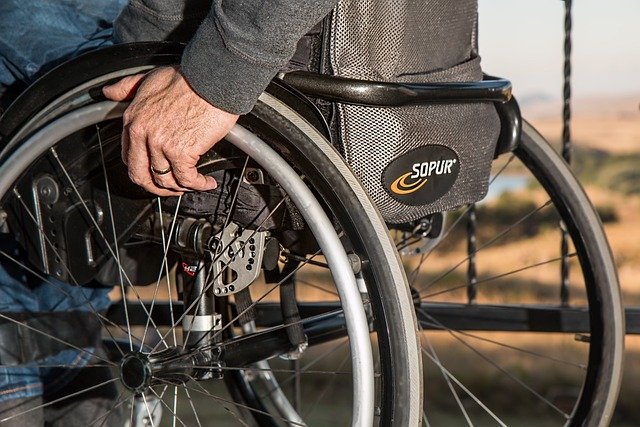Understanding Costs of Mobility Scooters for Seniors
Mobility scooters provide essential independence and freedom for seniors facing mobility challenges. With various models, features, and price points available in the market, understanding the cost structure becomes crucial for making informed purchasing decisions. From basic three-wheel models to advanced four-wheel options with enhanced features, the pricing landscape varies significantly based on specifications, brand reputation, and intended use.

Navigating the world of mobility scooters can feel overwhelming, especially when trying to balance functionality with budget considerations. These essential mobility aids have transformed the lives of countless seniors, offering renewed independence and the ability to participate in daily activities with confidence. The investment in a quality mobility scooter represents more than just a purchase—it’s an investment in maintaining an active, fulfilling lifestyle.
Mobility Scooter Price Factors
Several key elements influence the overall cost of mobility scooters. The type of scooter plays a primary role, with three-wheel models typically costing less than four-wheel versions due to their simpler construction. Battery capacity and range significantly impact pricing, as longer-lasting batteries with extended travel distances command higher prices. Weight capacity, maximum speed, and additional comfort features like adjustable seats, suspension systems, and storage compartments all contribute to the final cost.
Brand reputation and warranty coverage also affect pricing structures. Established manufacturers often charge premium prices for their proven reliability and comprehensive support services. The distinction between indoor-only models and outdoor-capable scooters creates another pricing tier, with weather-resistant features and robust construction increasing costs.
Mobility Scooter Price Guide Categories
Mobility scooters generally fall into three main price categories. Budget-friendly options typically range from basic functionality models suitable for occasional indoor use. These entry-level scooters provide essential mobility assistance without advanced features, making them accessible for seniors with limited budgets.
Mid-range scooters offer balanced functionality and durability, incorporating better build quality, improved comfort features, and moderate outdoor capabilities. These models represent the sweet spot for many users, providing reliable performance without premium pricing.
High-end mobility scooters feature advanced technology, superior comfort, extended range, and robust construction designed for frequent use and varied terrain. These premium models often include sophisticated suspension systems, high-capacity batteries, and comprehensive warranty packages.
Mobility Scooter Price Insights and Market Trends
Current market analysis reveals interesting pricing trends within the mobility scooter industry. Technological advancements have led to more efficient manufacturing processes, helping stabilize prices despite inflation in other sectors. The growing senior population has increased demand, encouraging manufacturers to offer diverse pricing options to capture different market segments.
Online retailers have introduced competitive pricing pressures, often offering significant savings compared to traditional medical equipment stores. However, the trade-off sometimes involves reduced customer service and limited hands-on testing opportunities before purchase.
Seasonal pricing patterns emerge around major shopping periods, with manufacturers and retailers offering promotional pricing during specific times of the year. Insurance coverage and Medicare reimbursement policies continue evolving, potentially affecting out-of-pocket costs for qualifying individuals.
| Scooter Type | Provider/Brand | Cost Estimation |
|---|---|---|
| Basic 3-Wheel Indoor | Drive Medical | $800 - $1,200 |
| Mid-Range 4-Wheel | Pride Mobility | $1,500 - $2,500 |
| Heavy-Duty Outdoor | Golden Technologies | $2,000 - $3,500 |
| Portable Travel | Merits Health | $1,200 - $2,000 |
| Premium All-Terrain | Shoprider | $2,500 - $4,000 |
Prices, rates, or cost estimates mentioned in this article are based on the latest available information but may change over time. Independent research is advised before making financial decisions.
How to Pick the Right Mobility Scooter
Selecting the appropriate mobility scooter requires careful consideration of individual needs, lifestyle requirements, and budget constraints. Begin by assessing intended usage patterns—will the scooter primarily serve indoor navigation, outdoor adventures, or a combination of both? Consider physical limitations, including weight capacity requirements and ease of operation features.
Evaluate transportation needs, as some seniors require portable models that disassemble for car transport, while others prioritize comfort and range over portability. Test-driving different models provides valuable insights into comfort levels, maneuverability, and overall suitability.
Consider long-term needs and potential changes in mobility requirements. Investing in a slightly more capable model initially may prove more cost-effective than upgrading within a few years. Factor in maintenance costs, parts availability, and local service support when making final decisions.
Financing options deserve exploration, including Medicare coverage possibilities, insurance benefits, and manufacturer financing programs. Some providers offer rental programs that allow extended testing periods before purchase commitments.
Understanding mobility scooter costs empowers seniors to make informed decisions that balance financial considerations with quality-of-life improvements. The investment in appropriate mobility equipment pays dividends through increased independence, social engagement, and overall well-being. Research thoroughly, test multiple options, and consider long-term needs to ensure the chosen scooter provides years of reliable service and enhanced mobility freedom.
This article is for informational purposes only and should not be considered medical advice. Please consult a qualified healthcare professional for personalized guidance and treatment.




